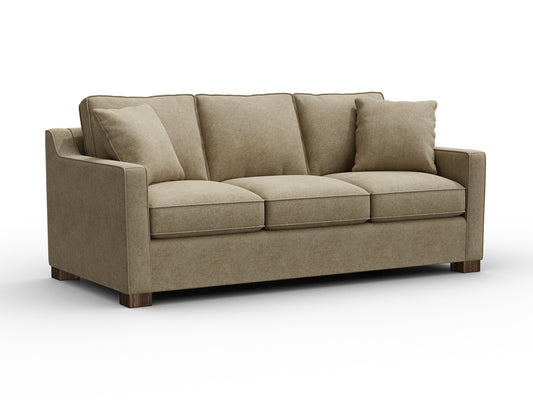How to Create Timeless Design: Lessons from William Morris

Leaving a notable mark on the field of design that has endured through the years, William Morris - artist, craftsman, philosopher and pioneer of timeless design - has maintained relevance and appeal across generations. It’s not easy to surpass trends and fads for well over a century, yet he’s managed to do just that with no sign of slowing anytime soon.
In a world where design trends come and go, we’ve put together a list of tips on how to pursue timelessness utilizing the design philosophies of William Morris. Read on to learn more!
A Brief History of the Life and Work of William Morris
William Morris, born in Walthamstow, Essex, England on March 24, 1834, was a leading figure in the 19th-century British arts and crafts movement. Influenced heavily by the Pre-Raphaelite Brotherhood while studying at Oxford, he was committed to reviving traditional craftsmanship and rejecting the industrialization of Victorian society.

In 1857 he founded Morris, Marshall, Faulkner & Co, later known as Morris & Co. The firm produced handcrafted goods - textiles, wallpapers, furniture and stained glass - that were inspired by nature, medieval art and folklore, and sought to infuse beauty into everyday objects by restoring the value of skilled craftsmanship. He also advocated for a more communal and sustainable way of life.
Later in life, he became increasingly involved in political activism, made a name for himself as a prolific writer and poet, and played a significant role in the British Arts and Crafts Exhibition Society which aimed to promote and preserve traditional crafts and design. By the time Morris passed away in 1896, he’d created beautiful and functional designs, inspired by nature and rooted in solid craftsmanship, and left a lasting legacy of design philosophies that continue to resonate and inspire today.
Creating Timeless Design
Utilizing William Morris’ core principles and philosophies, we’ve compiled this list of 8 tips to follow if you’re looking for timeless design.
1. Understand Morris’ Design Principles
Familiarize yourself with William Morris' design principles, which include simplicity, craftsmanship, nature-inspired motifs, and a focus on quality and longevity. His works are plentiful and by seeing them will help you gain insights into his design philosophy.
2. Embrace Nature
Incorporate nature-inspired elements into your design. Use organic shapes, floral patterns, and natural color palettes to create a sense of harmony and connection with the natural world, as Morris often did in his designs. For a little inspiration, take a look at any one of his wallpaper or fabric patterns.

3. Prioritize Craftsmanship
Focus on quality craftsmanship and attention to detail. Choose materials that are durable, sustainable, and have a timeless appeal. Incorporate traditional techniques and handcrafted elements to add a sense of authenticity and longevity to your designs.
4. Choose Simplicity
Keep your designs simple and avoid excessive ornamentation. Morris believed in the beauty of simplicity and sought to eliminate unnecessary embellishments. Strive for clean lines, uncluttered spaces, and a sense of balance and harmony in your design compositions.
5. Consider Functionality
Design with practicality in mind. Morris believed that design should serve a purpose and be functional. Ensure that your designs are not only aesthetically pleasing but also practical and user-friendly. Consider how your design will enhance the user's experience and fulfill their needs.

6. Value Sustainability
Integrate sustainable practices into your design process. Choose environmentally friendly materials and production methods. Aim for designs that can stand the test of time and reduce waste. Emphasize longevity and durability to create designs that can be cherished for years to come.
7. Cultivate Timelessness
Avoid design trends that are fleeting and focus on creating designs that transcend time. Seek inspiration from the past while infusing your unique creativity. Incorporate elements that evoke a sense of timelessness, allowing your designs to remain relevant and appealing for generations.
8. Seek Inspiration from Morris’ Works

Study and draw inspiration from William Morris' own designs. Analyze his use of color, patterns, and composition to understand how he achieved timeless appeal. Adapt his design principles to suit your own style and context while staying true to the essence of his work.
An ongoing process…
Remember, creating timeless design is an ongoing process that requires an understanding of design principles, an appreciation for craftsmanship, and a commitment to sustainable and purposeful design.
However you decide to make timeless design part of your home or work space, Modern Bungalow can help with pieces and decor that stand the test of time and inspire for years to come!
















